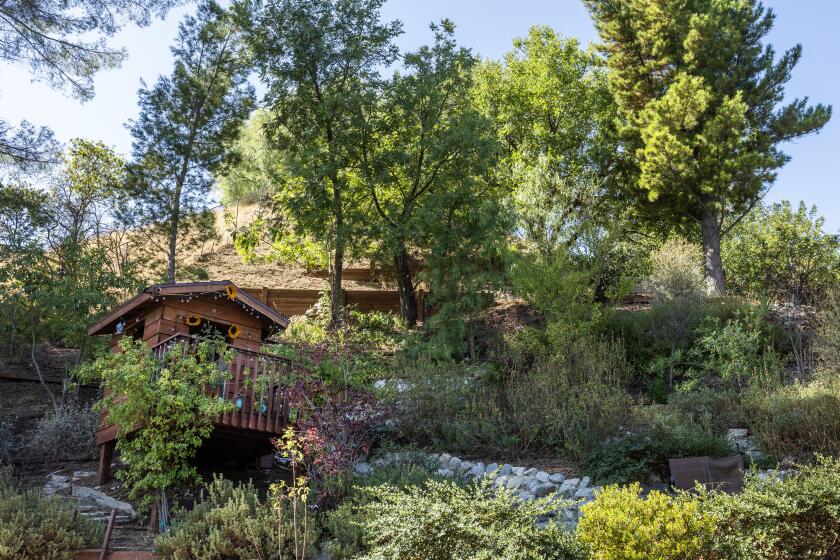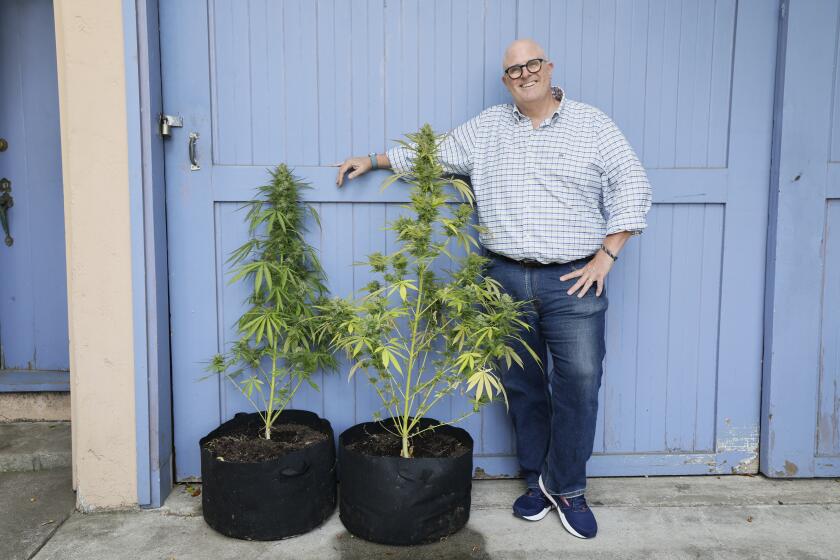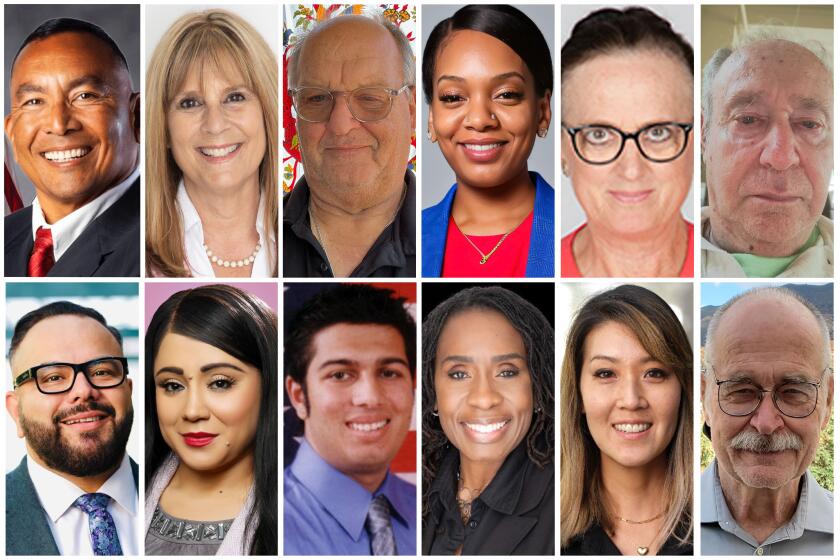Oasis of Health and Learning
From the window of the hospital clinic where he worked in East Los Angeles, Robert Krochmal used to look out at the unsightly lot next door and wonder who owned it.
The half-acre property was littered with garbage and broken glass, its two crumbling structures defaced with gang signs. Krochmal, a UCLA medical student then doing his residency at nearby White Memorial Medical Center, did some investigating and found, to his surprise, that the lot was owned by the hospital.
Four years later, with the help of Krochmal, the medical center staff, a local elementary school and many in the Eastside neighborhood, the land near Bridge Street and Boyle Avenue has been transformed.
Known locally by its Spanish name, Proyecto Jardin, the property is at once an outdoor classroom, a thriving community garden, a display space for local artists and an island of tranquillity for many in the often-troubled neighborhood.
At its entrance, banana plants heavy with fruit lean over an intricate iron gate decorated with motifs of corn, beans and squash. Nearby, sugar cane, lemon trees and cactuses grow in separate areas, divided by colorful tile mosaics lining a long, sloping driveway.
Soon, with the help of a $47,000 grant from UCLA’s Center for Community Partnerships, Proyecto Jardin will have yet another element: a garden of medicinal herbs such as chamomile, sage and yerba buena.
Still in its initial stages, the herb garden is planned as an educational project for community members interested in using the plants and for UCLA doctors and medical students who will carry out research there.
“We want to create a space for a dialogue between tradition and science,” said Krochmal, who is now a family physician at White Memorial and a research fellow studying herbal medicine at UCLA’s Center for Human Nutrition.
Researchers and medical students from the university and residents from the hospital hope to work closely with traditional healers and other members of the largely Latino community to examine the uses and efficacy of medicinal herbs.
The garden, Krochmal said, will “be a safe space for these two healing practices to come together without competition.”
Eventually, he said, those working on the garden hope to put together a series of workshops on herbal medicine, cooking classes on the use of specific herbs and even a cookbook.
The innovative project is one of 34 chosen for grants this year by UCLA’s Center for Community Partnerships, a program launched by Chancellor Albert Carnesale in 2002 to expand and deepen the university’s engagement with various communities in Los Angeles County.
“We’re a public university and it’s part of our mission to be involved,” said Franklin D. Gilliam Jr., a political scientist and associate vice chancellor who heads the new center. “Universities ought to play an important role in the quality of life of residents of this city. And beyond that, the city is one of the greatest laboratories in the world for research. Everybody benefits from this partnership.”
The 34 projects, all of which pair university partners with community organizations, were chosen from nearly 230 that applied for grants, Gilliam said. In all, $1 million was awarded this year, all of it private money from the UCLA Foundation.
Among the grant winners are a program that brings together students from a UCLA residence hall and youths at a South Los Angeles housing project for homework help.
Gilliam said that the garden is unusual because it involves two UCLA partners -- the medical school and the Department of World Arts and Cultures -- and that it is a little further along than many of the others. “It’s a very exciting project,” he said.
On a recent sunny afternoon, those at the garden seemed to agree. Two children chased each other, giggling and squealing, along its gravel paths, winding between beds of basil, lettuce and cilantro. Nearby, several adults from the neighborhood chatted as they worked together to weed a raised bed of broccoli and Swiss chard.
Gaby Garcia, 21, said she has been involved at Proyecto Jardin for more than two years, since Krochmal became her doctor at the nearby medical center. Now, she said, she comes to the garden several times a week to volunteer and socialize.
“It’s such a different atmosphere here,” she said. “It’s so peaceful. It’s a good place to come and just be here with the community.”
A strict vegetarian, Garcia said she has enjoyed learning to eat more healthfully and has used the garden’s produce, all of which is grown organically.
In fact, much of the garden’s focus is on education -- for adults and children alike, Krochmal and others said.
One of the young doctor’s first partners in setting up the garden was Bridge Street Elementary School, which is across the street. Roderick Spilman, who was then teaching second grade at the school, incorporated frequent trips to the garden and activities there into his curriculum.
During a unit on Hopi Indian culture, Spilman’s students used the garden’s dense clay soil to make adobe, fashioning bricks into a small shed at the back of the garden. Now used as a small seed library, the structure “is still holding up,” Spilman said.
He and others have also used the garden to teach children and their parents about a healthy diet. “It’s a great resource for the community,” said Spilman, who has since been transferred to another school.
UCLA graduate student Claudia Hernandez, 29, is among those helping plan the new herb garden, which is designed as a series of spiral beds around a central fountain.
Hernandez, a graduate student in UCLA’s Department of World Arts and Cultures, said she is researching a dissertation on stores that are known in the Latino community as botanicas, where shoppers buy herbs and consult herbal healers. After interviewing a number of such healers, she said, working at the garden will allow her to connect with people who use the herbs.
But Hernandez said that’s not the only reason she comes to the garden. “It’s a healing space,” she said, “for me and many others.”
More to Read
Sign up for Essential California
The most important California stories and recommendations in your inbox every morning.
You may occasionally receive promotional content from the Los Angeles Times.










